Groundbreaking Shark Research Reveals Stark Data on Global Fin Trade
Genetic analysis of fins from Hong Kong market reveals that about one third of species present are threatened with extinction
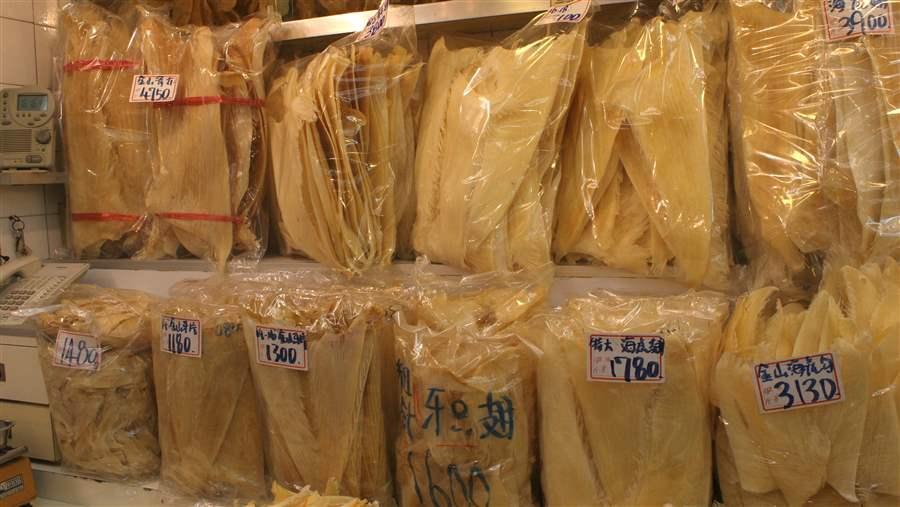
Shops selling dried shark fins are plentiful in Hong Kong, the global hub of the fin trade.
© Stan SheaA team of U.S.- and Hong Kong-based scientists completed a survey of the species composition of the shark fin trade in Hong Kong. Their findings provide the most comprehensive estimate to date of the high number of species, many of which are threatened with extinction, that are found in the global shark fin trade. The study, published in the October issue of the journal Conservation Biology, details how researchers used genetic testing to identify nearly 80 different species and species groups of sharks, rays, and chimaeras. By sampling more than 4,000 fins obtained in retail markets in Hong Kong, the global hub of the shark fin trade, the researchers were also able to estimate the relative abundance of these species available in the market.
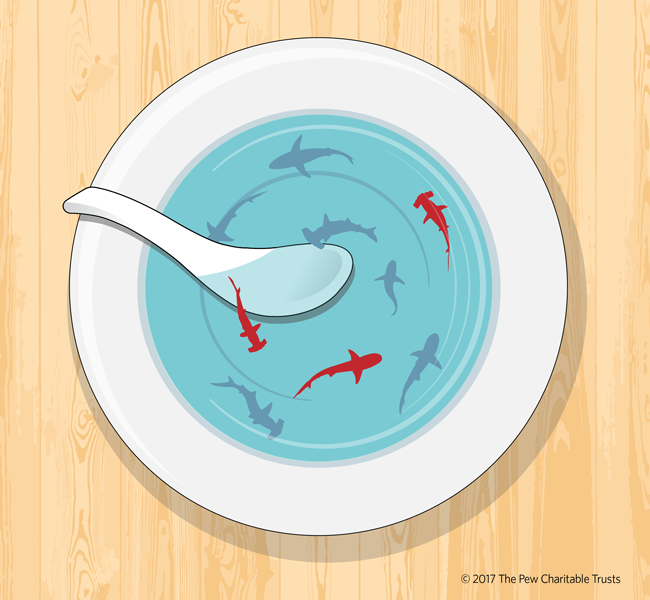
The data show that about a third of the species identified are listed by the International Union for Conservation of Nature (IUCN) as threatened with extinction.
About 30 widely distributed species account for the majority of the fin trade, and approximately one-quarter of those are listed on Appendix II of the Convention on International Trade in Endangered Species of Wild Fauna and Flora (CITES). When a species is CITES listed, international trade is allowed only if it won’t threaten the species’ survival. Blue sharks are by far the dominant species in the Hong Kong fin trade, but they are not CITES-listed or subject to catch limits in any regional fisheries management organization (RFMO).
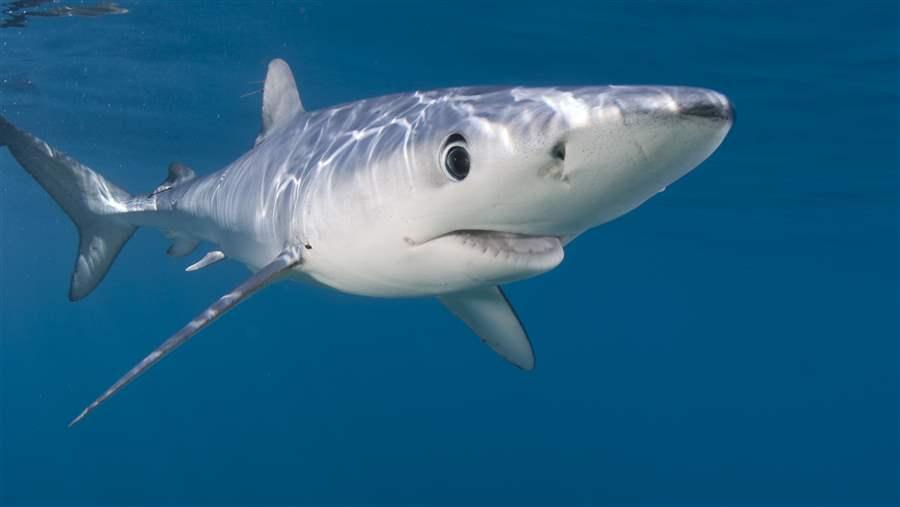
Blue sharks are the most traded of all shark species in the Hong Kong market.
© Chris and Monique FallowsThe remaining 50 or so species and species groups identified, including rays, such as guitarfish and wedgefish; chimaeras; and rarer shark species, are primarily caught in coastal fisheries. Careful local management will be needed for these species given their localized populations and potential trade value.
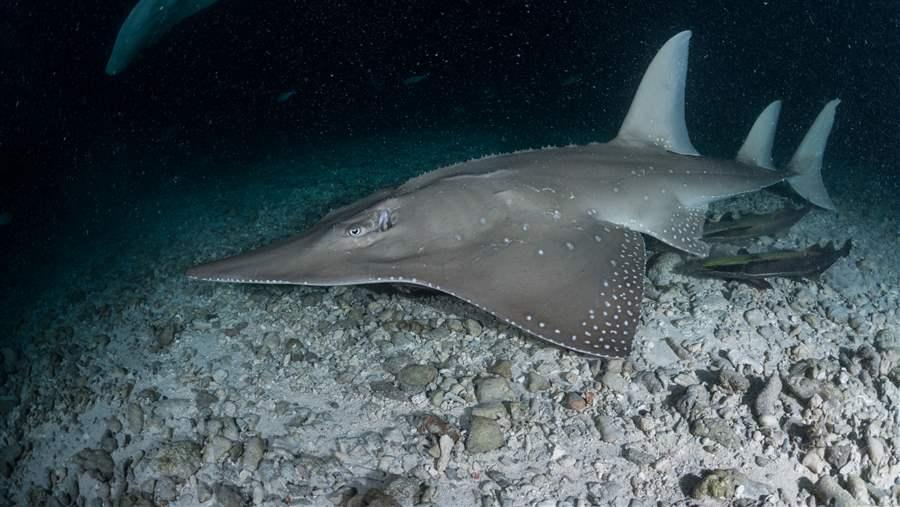
The guitarfish and wedgefish, pictured above, are also under pressure from the shark fin trade.
© iStockphotoThe study’s lead author, Demian Chapman, said, “The international fin trade is one of the primary drivers of the declines of shark populations worldwide. Our study indicates that the trade relies too heavily on exploitation of threatened species.” Chapman called for catch of these species to stop “immediately” and urged better management of “those that make up the bulk of the trade—such as blue, silky, bull, and blacktip sharks.”
This study proves that the global fin trade includes some of the world’s most endangered sharks: great hammerhead, scalloped hammerhead, winghead, broadfin, and river sharks. This finding underscores the fact that that the global fin trade in its current form is underpinned by species that can’t take this level of exploitation, and therefore is unsustainable.
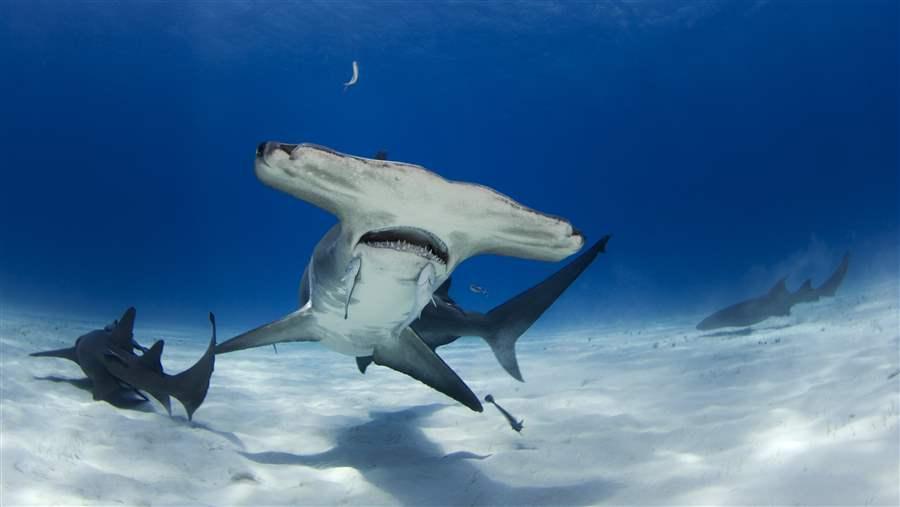
Although many species found in the fin trade, such as scalloped hammerhead sharks, are listed on CITES Appendix II, further support for enforcement is needed to halt their demise.
© ShutterstockIdentifying a more comprehensive range of the species included in the shark fin trade has been one of the missing links in properly shaping global shark protections and management strategies. Numerous governments have cited a lack of science to justify why they haven’t imposed basic management of shark populations or comprehensive restrictions on the global trade in fins.
However, this groundbreaking study may start to change that. Governments can use the new data to put in place strong protections or other robust fisheries management measures for any species that enters the global fin trade.
The genetic tests reveal the large number of threatened and endangered species found in the global fin trade. If governments act on this information and properly manage the catch of sharks, rays, and chimaeras, it might become sustainable. But this research demonstrates just how far away that goal is.
Funding for the study was provided by The Pew Charitable Trusts and the Roe Foundation.
Philip Chou is an officer for The Pew Charitable Trusts’ global shark conservation work.







